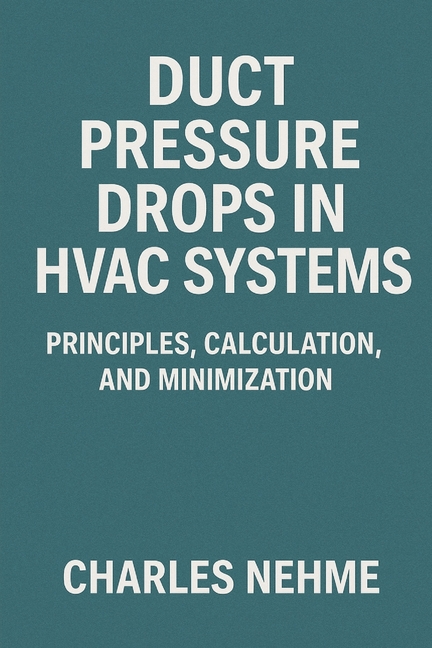Description
The ubiquitous presence of heating, ventilation, and air conditioning (HVAC) systems in our modern built environments often leads us to take their essential functions for granted. We expect comfortable indoor temperatures, clean breathable air, and quiet operation without much thought to the intricate engineering that makes it all possible. Yet, at the heart of every effective HVAC system lies a critical, often underestimated, principle: the management of duct pressure drops.
For over three decades, my work as a global HVAC and MEP Consultant has provided me with a unique vantage point on the evolution of building systems. From complex industrial facilities to large-scale commercial developments and intricate residential projects across diverse global markets, one constant has remained paramount: the need for precise and intelligent airflow distribution. And nowhere is this more acutely felt than in the challenge of mitigating pressure losses within the ductwork.
This book, "Optimizing HVAC Systems: A Comprehensive Guide to Duct Pressure Drop Management," is born from this extensive experience. It aims to demystify the science behind air movement in ducts, providing a clear and practical guide to understanding, calculating, and, most importantly, minimizing the often-overlooked phenomenon of pressure drop.
Why is this topic so vital? An HVAC system's fan is essentially a pump, tasked with overcoming the resistance of the entire duct network. Every bend, every transition, every filter, and every foot of duct length contributes to this resistance, demanding more energy from the fan. Excessive pressure drop translates directly into:
- Higher Energy Consumption: Forcing the fan to work harder means significantly increased electricity bills and a larger carbon footprint.
- Reduced System Performance: Inadequate airflow leads to uneven temperature distribution, discomfort, and a system that simply cannot meet its design intent.
- Increased Noise: High air velocities and turbulent flow, often symptoms of poorly managed pressure drop, are major culprits in creating noisy HVAC systems.
- Premature Equipment Wear: An overworked fan motor will inevitably have a shorter lifespan, leading to higher maintenance costs and system downtime.
- Compromised Indoor Air Quality: Insufficient ventilation due to restricted airflow can lead to a buildup of pollutants, directly impacting occupant health and well-being.
Despite its profound impact, the intricacies of pressure drop are sometimes simplified or misunderstood, even by seasoned professionals. This book seeks to bridge that gap, offering a foundational understanding for students and new engineers, while providing advanced insights and practical strategies for experienced designers, installers, and facility managers.
We will journey from the basic principles of airflow and pressure to the detailed calculations of frictional and dynamic losses. We will explore various duct sizing methods, the impact of material selection and construction, and delve into the critical relationship between fans and the system curve. Crucially, we will provide actionable strategies for optimizing duct systems for peak energy efficiency, offer practical troubleshooting techniques for common issues, and touch upon advanced topics and future trends shaping the HVAC industry.
My hope is that by equipping readers with a comprehensive understanding of duct pressure drop, we can collectively contribute to the design and operation of more efficient, sustainable, and comfortable built environments for generations to come.
Charles Nehme
Global HVAC and MEP Consultant
Product Details
- Jul 7, 2025 Pub Date:
- 9798291368459 ISBN-10:
- 9798291368459 ISBN-13:
- English Language




